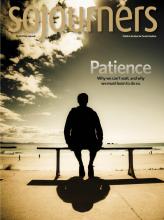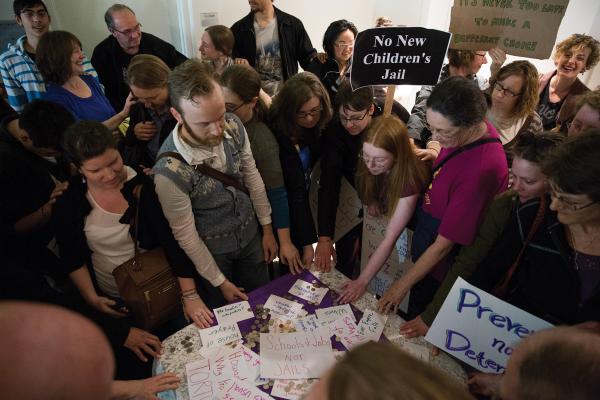ON THE SUNNY Monday before Easter 2015, roughly 60 people, some wearing clerical collars, gathered in front of Key Arena in Seattle. “Build futures, not cages,” one sign read. “Love youth/build hope/invest in futures,” read another.
The timing of this protest against a proposed new youth jail in Seattle’s Central District was no accident: Activists had dubbed it Holy Table-Turning Monday, a commemoration of Jesus flipping over the tables of money changers in the temple square in Jerusalem.
The group, a mix of church people — Methodist, United Church of Christ, Presbyterian, and others — and organizers from Youth Undoing Institutional Racism (YUIR) and Ending the Prison Industrial Complex (EPIC), crossed the street and entered the lobby of a building housing the offices of Howard S. Wright, the contractor hired to construct the proposed detention center. An uneasy PR man walked out from the glass-walled offices and chatted with a pastor in a purple stole.
Meanwhile, members of the group set up a card table and laid a purple tablecloth on it. They piled it high with nickels, symbolizing the 30 pieces of silver Judas received in exchange for his betrayal of Jesus, and cards with hand-written messages. “Change agent,” one said. “Be accountable to our history and dismantle the prison-industrial complex,” said another. The group prayed, acknowledging their own complicity in the system they sought to destroy. Then, as a unit, they flipped the table over.
Nickels crashed to the ground and the tablecloth fell in a heap of purple and lace. Folding up the table, the group walked out. A few office workers peeked out into the lobby.
Read the Full Article

